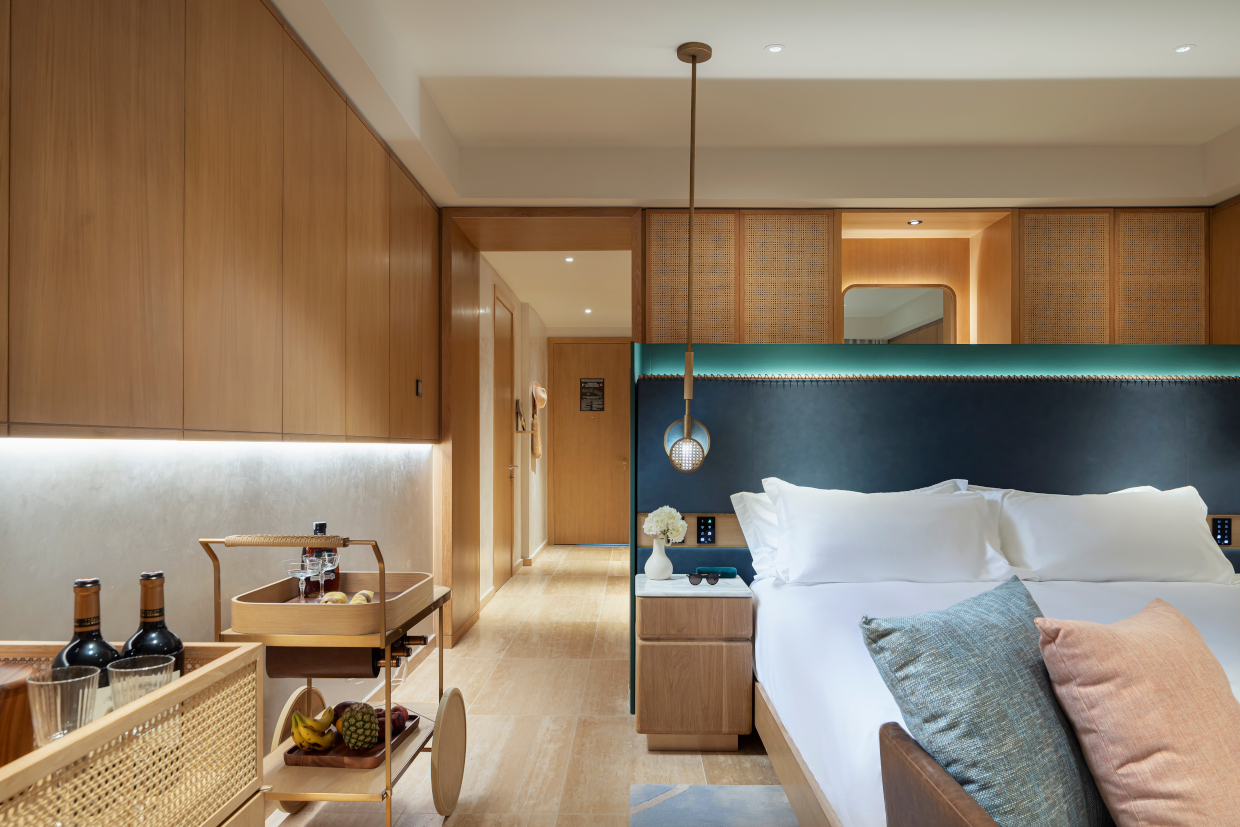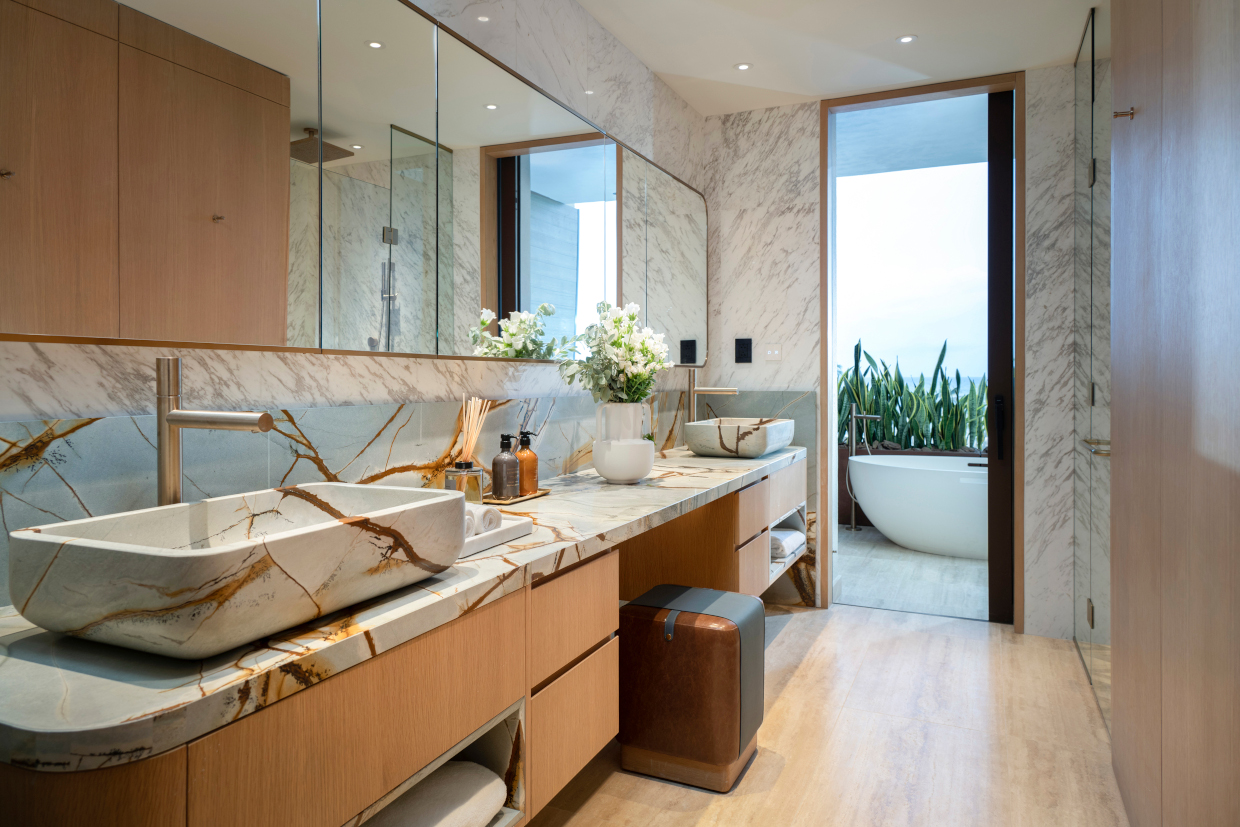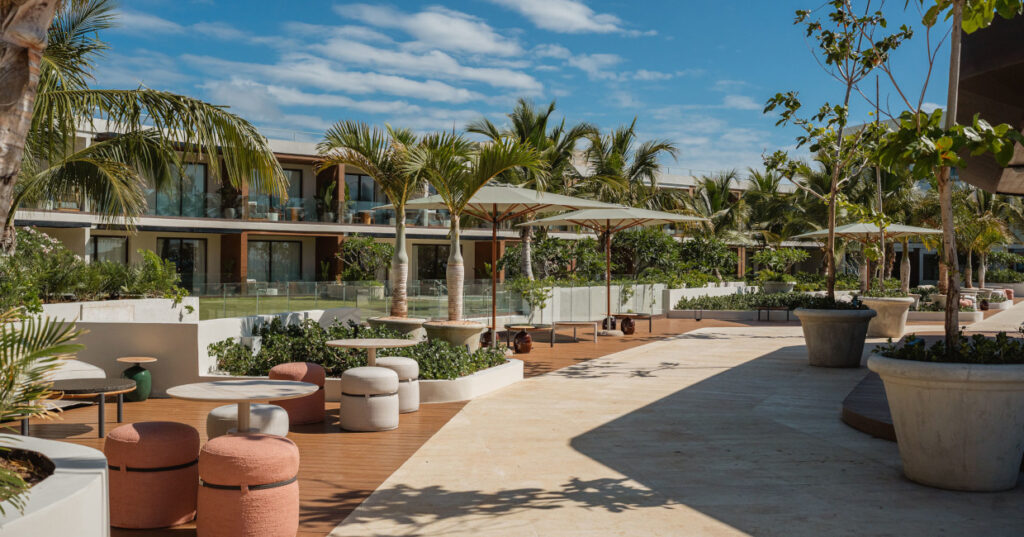CHAPI Design, led by Founder Tatiana Sheveleva, has unveiled its latest masterstroke: the interiors of The St. Regis Cap Cana Hotel and Branded Residences, a landmark project that has become a design manifesto for luxury hospitality in the Caribbean.
The 200-key hotel marks St. Regis’ first foray into the Dominican Republic, and it does so with architectural aplomb, courtesy of Acebal Canney Arquitectos & Asociados and a deeply poetic interior vision realised by CHAPI Design. For Tatiana, every element of the hotel hums with an intention steeped in the land’s history, spirit and rich multicultural lineage. The result is a luxury resort that moves beyond aesthetics – it is an experiential narrative sculpted in stone, air and light.
“Translating layered cultural identities into immersive, living spaces is at the heart of what we do at CHAPI Design – it’s our calling card,” said Tatiana. “With St. Regis Cap Cana, we sculpted a soulful portrait of the Dominican Republic, drawing from its land, its people and its pulse. It’s a place that breathes with meaning, and I’m deeply proud of what we’ve brought to life here.”
 A design language rooted in local identity
A design language rooted in local identity
The foundation of the hotel’s design narrative lies in the ‘faceless doll’, a striking symbol of the Dominican Republic’s cultural plurality. Handmade by local artisans, these dolls’ faceless forms embody inclusivity, representing a collective identity that transcends individualism. Tatiana integrates this powerful motif throughout the resort, turning it into a visual language of unity – where her colours represent the land, her ornamentation echoes the spirit of the people and her very form speaks to the transcendent beauty of a nation.
“This is a place where nature and culture are formed together, a celebration of transformation – land moulded into art, water shaping the earth, and cultures harmonising,” she explains. “From the cliffside vistas to the palm-lined beaches, every detail is deliberate, imbuing the property with a palpable sense of belonging.”
A symphony of materials and textures
The resort’s lobby serves as the anchor of this narrative – a space that embodies the island’s biodiversity and cultural hybridity, where guests are immediately captivated by the mesmerising waterfall and the striking sculptural staircase. Dubbed “The Meeting of All Palms,” the lobby’s design merges sculptural forms, curated textures and artisanal finishes in a seamless symphony of contrasts. Just as the island’s palms thrive in harmony, so too does the architectural composition of this central space, bringing together elements that celebrate the diverse yet united identity of the Dominican Republic.
The St. Regis Bar distils the essence of the faceless doll into an immersive cultural homage. The design speaks to the island’s history and contemporary spirit, intertwining local materials and textures with bold, sculptural lines that evoke a sense of shared identity. The space becomes a living gallery of the island’s vibrant culture, where details reflect the seamless blending of past and present.
 Guestrooms unfold as private observatories – expansive, chiselled and elemental. A generous bedroom opens into a fluid, open-concept bath, where a statement tub – carved with organic grace – anchors the space like a tidepool in stone. Custom accent tiles and layered lighting echoing the island’s layered heritage, and lend cultural depth to the ritual of bathing.
Guestrooms unfold as private observatories – expansive, chiselled and elemental. A generous bedroom opens into a fluid, open-concept bath, where a statement tub – carved with organic grace – anchors the space like a tidepool in stone. Custom accent tiles and layered lighting echoing the island’s layered heritage, and lend cultural depth to the ritual of bathing.
The headboard draws a horizon line – not metaphorically, but architecturally – a quiet tribute to the endless meeting of sea and sky. Even utility is treated with design discipline: a bespoke minibar and cocktail trolley stand ready for dusk rituals, pairing function with flair.
Inside and out, the room is a study in considered ease — layered seating, framed views, and materials that invite touch.
Elsewhere, the Ballroom and Meeting Rooms pulse with the rhythmic energy of merengue – the Dominican Republic’s signature dance. Flowing lines, dynamic textures and an architectural composition designed for movement create spaces that celebrate both tradition and festivity.
The Spa draws inspiration from the island’s natural forces. A delicate interplay of water and stone mirrors the sculptural coastline, while organic, flowing lines evoke the dance of palm fronds on the water. In this space, softness and strength converge, offering a sanctuary for rejuvenation that mirrors the island’s own metamorphic beauty.
Dining in design
The resort’s public areas act as vessels for storytelling, with every restaurant, corridor and lounge serving as a chapter in CHAPI Design’s larger narrative:
- The Steakhouse Restaurant is a visceral experience, combining indigenous Taino, Spanish, and African cultural influences through a rich material palette that reinterprets tradition in the context of modern luxury.
- The Three-Meal Restaurant is inspired from the spirit of “desde adentro hacia afuera” (from the inside out), with its core defined by an indoor waterfall that radiates outward into the lush natural landscape.
- The Cigar Club offers a sensorial escape with sweeping curves and smoky lines that evoke the natural elegance of a fine Dominican cigar as it rises into the Caribbean sky.
- The Pool Grill Restaurant pulses with the vibrant energy of merengue, reflected in unvarnished, organic textures and flowing curves that mirror the rhythm of the island’s musical heart.
Crafting memory through materiality
At the heart of CHAPI Design’s approach is a deep commitment to meaningful luxury. Every material, from handcrafted textures to organic stone, is chosen for its resonance with the landscape. “In an era of design that often favours the anonymous and the global,” Tatiana adds, “our design philosophy leans deeply into the singularity of place, crafting an experience that is as rich in narrative as it is in tactile experience.”
With St. Regis Cap Cana, Tatiana and her team have redefined Caribbean luxury design – not through excess, but through depth. Here, history, culture and design are tightly interlaced to create a lasting experience that lingers well beyond departure.



